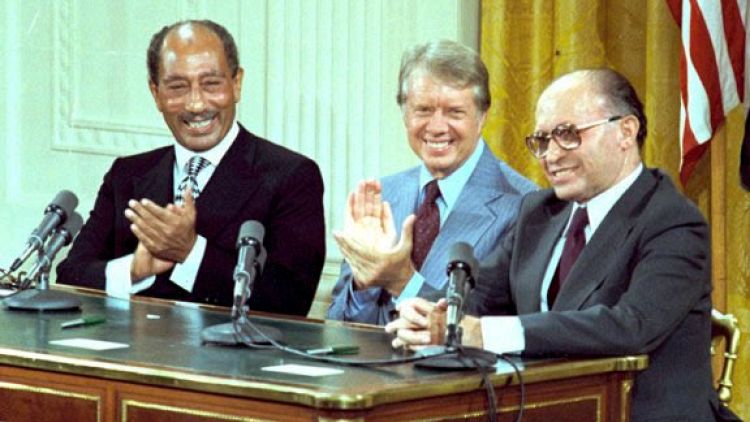By Jeffrey Heller
JERUSALEM (Reuters) - The United States is holding an economic conference in Bahrain on Tuesday and Wednesday to encourage investment in the occupied West Bank and Gaza Strip.
It is billed as an overture to U.S. President Donald Trump's Israeli-Palestinian peace plan.
Palestinians are boycotting the event and Israeli government officials will not be there either, although an Israeli business delegation is expected. The second part of the plan, dealing with tougher political issues, will not be released until later.
The initiative's follows a history of peace efforts that have failed to overcome decades of distrust and violence.
Here is a list of the main plans and initiatives undertaken by the parties themselves and international mediators since the 1967 Middle East war, when Israel captured the Jordanian-held West Bank and East Jerusalem, Egypt's Sinai peninsula and the Egyptian-run Gaza Strip and Syria's Golan Heights:
1967 - U.N. Security Council Resolution 242
After the Six-Day War, U.N. Security Council Resolution 242 calls for the "withdrawal of Israeli armed forces from territories occupied in the recent conflict" in return for all states in the area to respect each other's sovereignty, territorial integrity and independence.
The resolution is the foundation for many peace initiatives but its imprecise phrasing - is the reference to all territories or just some? - has complicated efforts for decades.
1969 -1971 - The Rogers Plans
U.S. Secretary of State William Rogers proposes three plans that focussed on ending warfare between Israel and Egypt, whose forces were then glaring at one another across the Suez Canal. It urged that Jerusalem be a "unified city" with roles for Israel and Jordan in its civic, economic and religious life. It also called for a "just settlement" for Palestinian refugees.
1978 - Camp David agreement
Five years after the 1973 Middle East war, which began with Egyptian and Syrian offensives to regain the Sinai and the Golan Heights and ended with Israel still in control of the two territories, U.S. President Jimmy Carter brings Israel's Menachem Begin and Egypt's Anwar Sadat to Camp David, the presidential retreat in Maryland, to negotiate peace.
In 1977, after a series of disengagement of forces agreements between Israel and Egypt, Sadat had become the first Arab leader to visit Israel. At Camp David, he and Begin agree on a Framework for Peace in the Middle East.
It calls for an Israeli-Egyptian peace treaty, an Israeli withdrawal in stages from the Sinai and a transitional Palestinian self-government in the West Bank and Gaza Strip.
1979 - Israeli-Egyptian peace treaty
Signed on the White House lawn, it is the first peace treaty between Israel and an Arab country. It set out plans for a complete Israeli withdrawal from the Sinai within three years.
1981 - Fahd Plan
Saudi Crown Prince Fahd proposes plan calling for complete Israeli withdrawal from territories captured in 1967, creationt of a Palestinian state with Jerusalem as its capital and a right of return or compensation for Palestinian refugees.
1982 - The Reagan Plan
After Israel's invasion of Lebanon, U.S. President Ronald Regan urges a "fresh start" in resolving the wider Israeli-Arab conflict. He proposes a five-year transitional period of Palestinian autonomy in the West Bank and Gaza Strip and negotiations leading to self-government by the Palestinians in association with Jordan.
1991 - Madrid summit
Four years after a Palestinian Intifada, or uprising, erupted in the West Bank and Gaza, an international peace conference convenes in Madrid. Representatives of Israel and the Palestine Liberation Organization (PLO) attend, an historic first. No agreements are reached but scene is set for direct Israeli-Palestinian contacts.
1993-1995 - Declaration of Principles/Oslo Accords
Israel and the PLO hold secret talks in Norway that result in interim peace agreements. The accords call for a Palestinian interim self-government and an elected council in the West Bank and Gaza for a transitional period not exceeding five years, along with Israeli troop withdrawals. Negotiations would begin no later than the third year of the interim period on a permanent Israeli-Palestinian agreement.
2000 - Camp David summit
With Israel and the Palestinians unable to resolve core issues, U.S. President Bill Clinton convenes Palestinian leader Yasser Arafat and Israeli Prime Minister Ehud Barak at Camp David. They fail to reach a final agreement and another Palestinian uprising ensues.
2002-2003 - Bush Declaration/Arab peace initiative/Road Map
George W. Bush becomes first U.S. president to call for creation of a Palestinian state, living side-by-side with Israel "in peace and security".
Saudi Arabia presents Arab League-endorsed peace plan for full Israeli withdrawal from territory occupied in 1967 and Israel's acceptance of a Palestinian state in return for normal relations with Arab countries.
Quartet of mediators - the United States, the European Union, the United Nations and Russia - presents a roadmap to a permanent two-state solution to the conflict.
Amid the Palestinian uprising, the plan calls for an "end of terror and violence", Israeli troop pullbacks and an Israeli settlement freeze, all leading to final-status negotiations.
2007 - Annapolis summit
In the most intense U.S. peace push since Israeli-Palestinian talks collapsed in 2000, Bush hosts a Middle East summit in Annapolis, Maryland. Palestinian President Mahmoud Abbas and Israeli Prime Minister Ehud Olmert attend and agree to resume talks, with the declared aim of crafting a peace treaty by 2008. Olmert later says they were close to a deal but a corruption investigation against him and a Gaza war in 2008 caused the negotiations to end.
2009 - Netanyahu's Bar-Ilan address
In a speech at Israel's Bar-Ilan University, Prime Minister Benjamin Netanyahu says he would be prepared to reach a peace agreement that includes establishment of a demilitarised Palestinian state. He also sets another condition: Palestinian recognition of Israel as the "state of the Jewish people".
2010 - Israeli settlement freeze/talks resume - and end
Under pressure from U.S. President Barack Obama, Netanyahu imposes a 10-month partial moratorium on settlement construction in the West Bank. Peace talks resume just before the freeze ends, and then break down within weeks after Netanyahu refuses to extend the moratorium.
2013 - 2014 - Washington peace talks/negotiations collapse
Israeli and Palestinian negotiators, coaxed to resume talks by U.S. Secretary of State John Kerry, meet in Washington. Kerry says the objective is to reach a final-status agreement within nine months. Talks go nowhere and Israel suspends them in April 2014, citing its opposition to a unity pact between President Mahmoud Abbas's Fatah group and Hamas Islamists.
2019 - Netanyahu says he intends to annex West Bank settlements
(Editing by Angus MacSwan)


